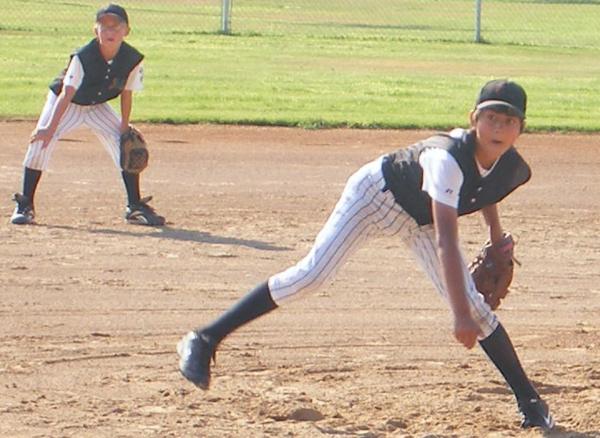Poor pitching mechanics can put additional stress on a young arm and increase the risk of injury, experts say.
It will come as no surprise to anyone who watches youth baseball with any regularity that pitchers in their teens have better throwing mechanics than younger pitchers.
A video analysis of youth pitchers1 found that adolescent pitchers (ages 14 to 18) performed better than youth pitchers (ages 9 to 13) on five simple measures of pitching mechanics (leading with the hips, hand-on-top position, arm in throwing position, closed-shoulder position, and stride foot toward home plate).
Eight out of ten of the adolescent pitchers performed three or more parameters correctly compared with two-thirds of the younger age group, although, unexpectedly, youth pitchers (86%) outperformed their older counterparts (66%) on the stride foot toward home plate measure.
The study suggests that the five measures of pitching mechanics studied may be developmental milestones for youth pitchers as they improve their mechanics over the years and learn to pitch, although it is unclear whether the development is a function of coaching and instruction or whether athletes more easily perform them as neuromuscular function (e.g. coordination) improves with age.
Four problem areas
Experts nevertheless believe that proper positioning of the throwing arm during all phases of the pitching motion can reduce the number of injuries.
According to Thomas J. Gill, M.D., an orthopedist at Massachusetts General Hospital and Boston Red Sox team physician, "pitcher's arm movements during different phases of the pitching motion, if performed incorrectly, can cause injury." Researchers have identified four problem areas:- Maximum shoulder rotation: A pitcher needs to rotate his body more to avoid placing too much stress on the arm and shoulder, which occurs when his arm is positioned too far behind his body.
- Improper elbow angle: The pitcher's arm needs to be away from his body when the ball is released; the closer the arm is to the body, the more potential for injury. [Note: a 2012 study of college-age pitchers, however, found that elbow position did not increase injury risk].
- Arm lagging behind the body: When a pitcher gets tired, his arm tends to lag behind his body, placing undue stress on the shoulder.
- Excessive ball speed: Trying to throw too hard can be harmful, especially for young players, warns Dr. Gill. A 2006 study2 by researchers at the American Sports Medicine Institute found that those athletes who threw a fastball at speeds greater than 85 mph were at 2 and 1/2 times increased risk of arm injury than those whose fastball velocity was slower than 85 mph.
Step by step
Players should follow a step-by-step approach to learning how to pitch:
- Basic throwing.
- Fastball pitching. At all levels of competition, agood fastball is the foundationfor successful pitching; thus, the young baseball pitcher should master the fastball first.
- Change-up pitching (studies show it places the least stress on the arm)
- Curve ball.
Use of lighter balls may also lessen the risk of overuse injury in pitchers between ages 9 and 12.
1. Fortenbaugh D, Fleiseg G, Andrews J. Baseball Pitching Biomechanics in Relation to Injury Risk and Performance. Sports Health: A Multidisciplinary Approach 2009;1:314-320.
2. Olsen SJ 2nd, Fleisig GS, Dun S, Loftice J, Andrews JR. Risk factors for shoulder and elbow injuries in adolescent baseball pitchers. Am. J Sports Med. 2006;34(6):905-912.
Posted March 28, 2011; revised and updated February 14, 2012








